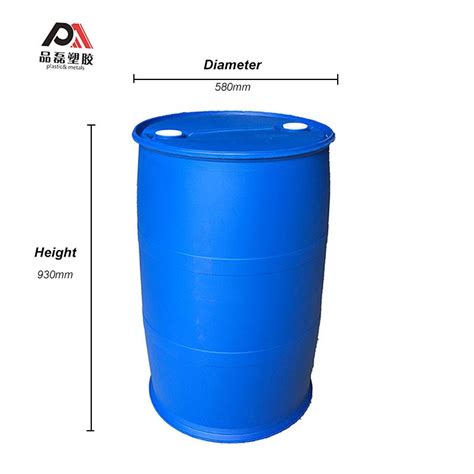How Many Cubic Feet In 55 Gallon Drum
Arias News
Mar 26, 2025 · 4 min read

Table of Contents
How Many Cubic Feet in a 55-Gallon Drum? A Comprehensive Guide
The question, "How many cubic feet are in a 55-gallon drum?" is a common one across various industries, from construction and manufacturing to waste management and chemical storage. Understanding the volume conversion between gallons and cubic feet is crucial for accurate material estimations, efficient space planning, and safe handling practices. This comprehensive guide will delve into the calculation, explore common misconceptions, and provide practical applications of this conversion.
Understanding the Conversion: Gallons to Cubic Feet
The key to answering this question lies in understanding the relationship between gallons and cubic feet. There are 7.48 gallons in one cubic foot. Therefore, to find the cubic feet equivalent of a 55-gallon drum, we can use the following formula:
Cubic Feet = Gallons / 7.48
Plugging in the 55-gallon value, we get:
Cubic Feet = 55 gallons / 7.48 gallons/cubic foot ≈ 7.35 cubic feet
Therefore, a standard 55-gallon drum holds approximately 7.35 cubic feet of volume. It's important to note that this is an approximation. Slight variations might occur due to the drum's manufacturing tolerances and the actual shape of the drum (slightly tapered sides are common).
Factors Influencing Volume Calculations
While the calculation above provides a good estimate, several factors can influence the actual volume of a 55-gallon drum:
1. Drum Dimensions and Shape:
While often assumed cylindrical, 55-gallon drums are not perfectly cylindrical. Slight variations in diameter and height exist between manufacturers, impacting the overall volume. Measuring the actual dimensions (diameter and height) of your specific drum and using the formula for the volume of a cylinder (πr²h, where r is the radius and h is the height) would provide a more accurate calculation. However, this level of precision may not always be necessary.
2. Material Thickness:
The thickness of the drum's steel or plastic walls reduces the internal volume available for storage. This difference is usually minimal but can be relevant when dealing with very precise volume measurements.
3. Drum Type:
There are different types of 55-gallon drums, including open-head, tight-head, and UN drums (designed for hazardous materials). While the nominal volume remains 55 gallons, slight variations in design can subtly affect the actual cubic footage. UN drums, for example, might have slightly thicker walls or different structural components impacting their internal volume.
4. Filling Level:
The actual volume occupied by a substance within a 55-gallon drum depends on the filling level. A drum filled to the brim will have the full 7.35 cubic feet, but a partially filled drum will have less.
Practical Applications of the Conversion
Knowing the cubic feet equivalent of a 55-gallon drum is essential in various contexts:
1. Material Estimation:
When purchasing or storing bulk materials like sand, gravel, or liquids, converting gallons to cubic feet helps accurately estimate the required number of drums. This is crucial for projects with precise material requirements, minimizing waste and avoiding shortages.
2. Space Planning and Storage:
In warehouses and storage facilities, understanding the cubic footage occupied by drums is critical for efficient space utilization. Accurate calculations ensure optimal storage arrangements, maximizing storage capacity and minimizing wasted space.
3. Transportation and Shipping:
For shipping and transportation purposes, accurate volume calculations are needed to determine freight costs and ensure compliance with weight and volume limitations. Incorrect estimations can lead to increased shipping costs or logistical complications.
4. Hazardous Material Handling:
In industries dealing with hazardous materials, precise volume calculations are vital for safety and compliance. This is important for accurate labeling, spill response planning, and emergency procedures.
5. Waste Management:
Waste management facilities need to accurately determine the volume of waste materials for efficient disposal and recycling processes. Accurate volume calculations ensure smooth operations and minimize environmental impacts.
Common Misconceptions and Clarifications
Several misconceptions surround the conversion of 55 gallons to cubic feet:
Misconception 1: A 55-gallon drum is exactly 7.48 cubic feet.
While the calculation is based on the conversion factor 7.48 gallons/cubic foot, the slight variations in drum dimensions and wall thickness mean it's an approximation, not an exact value.
Misconception 2: All 55-gallon drums are identical.
As mentioned, variations exist in dimensions and design between manufacturers and drum types. This means actual volume might differ slightly.
Misconception 3: The volume only refers to the interior space.
The stated volume of 55 gallons refers to the interior space available for storing materials. The exterior dimensions are larger due to the drum's wall thickness.
Conclusion: Beyond the Simple Calculation
While the simple calculation of 55 gallons / 7.48 gallons/cubic foot ≈ 7.35 cubic feet provides a useful estimate, a deeper understanding of the factors influencing the actual volume is crucial for accurate and practical applications. Consider the drum's specific dimensions, material thickness, and type for more precise measurements when necessary. This comprehensive approach ensures efficient material management, optimized storage, and adherence to safety and compliance regulations across diverse industries. Remember, this knowledge empowers you to make informed decisions, optimize resources, and handle materials safely and efficiently.
Latest Posts
Latest Posts
-
How Much Is A Quarter Billion Dollars
Mar 29, 2025
-
What Transaction Code Is Used To Modify The Users Profile
Mar 29, 2025
-
How Much Is 15 Oz In Cups
Mar 29, 2025
-
Does Frozen Chicken Weigh The Same As Thawed Chicken
Mar 29, 2025
-
Which Type Mountain Is Not Formed Due To Plate Collision
Mar 29, 2025
Related Post
Thank you for visiting our website which covers about How Many Cubic Feet In 55 Gallon Drum . We hope the information provided has been useful to you. Feel free to contact us if you have any questions or need further assistance. See you next time and don't miss to bookmark.
